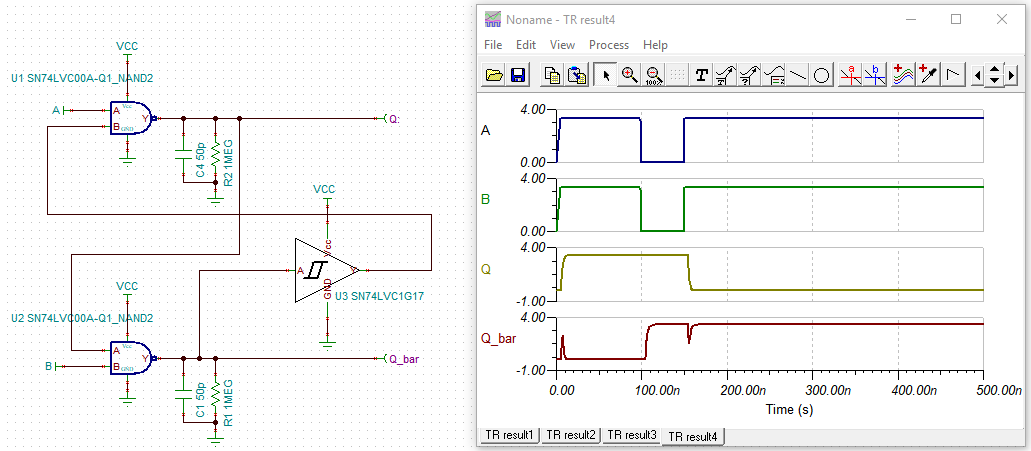Other Parts Discussed in Thread: SN74HC00, SN74AUP2G17
I am using the SN74AUP2G00 to make an active low, SR latch. How do I make the SR latch reset dominant?
This thread has been locked.
If you have a related question, please click the "Ask a related question" button in the top right corner. The newly created question will be automatically linked to this question.
I am using the SN74AUP2G00 to make an active low, SR latch. How do I make the SR latch reset dominant?
Hi Pradeep,
The first result for this question on google has a pretty decent answer: https://electronics.stackexchange.com/questions/64831/given-a-gated-sr-latch-how-do-i-make-it-a-set-dominant-gated-sr-latch
I think you could also do this instead, depending on your exact definition of "reset dominant":
This just adds a little delay in the reset feedback loop, so if S\ and R\ are asserted at the same time, then released at the same time, the output should settle on Q = L and Q\ = H. I think it's possible that this could also turn into an oscillator under the right conditions (I haven't been able to get it to happen in simulation though); the more complex solution linked above is probably the better bet.
Here's a simulation of the above circuit:
As long as the buffer is faster than the NAND gates, then it should prevent oscillation from occurring. You can see above that the Q\ output tries to switch low, but it isn't fast enough to fully switch, and the output returns high. Lighter loads produce even less of a glitch in the output.
Hi Emrys,
I did some further simplification using just NAND gates and I want to see if you concur. The OR circuit can be constructed with NAND gates, right? Then the circuit would look like this:
This can be further simplified to this by removing the redundant, cascaded inverter stages. Do you agree this should work? I'd like to just use NAND gates if I can.